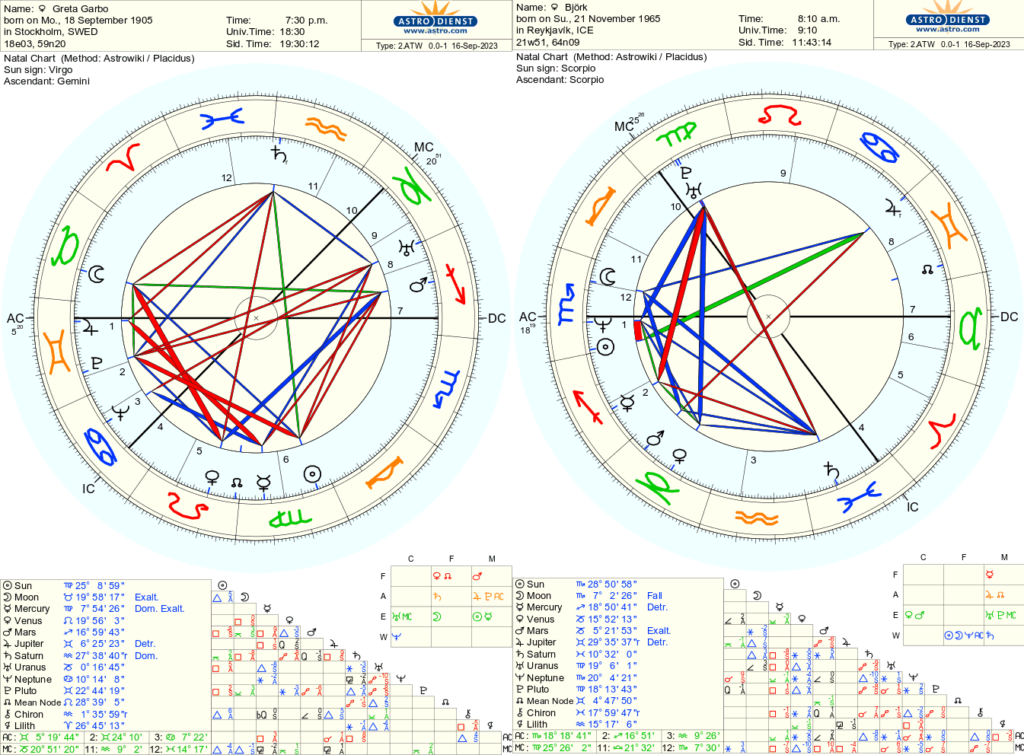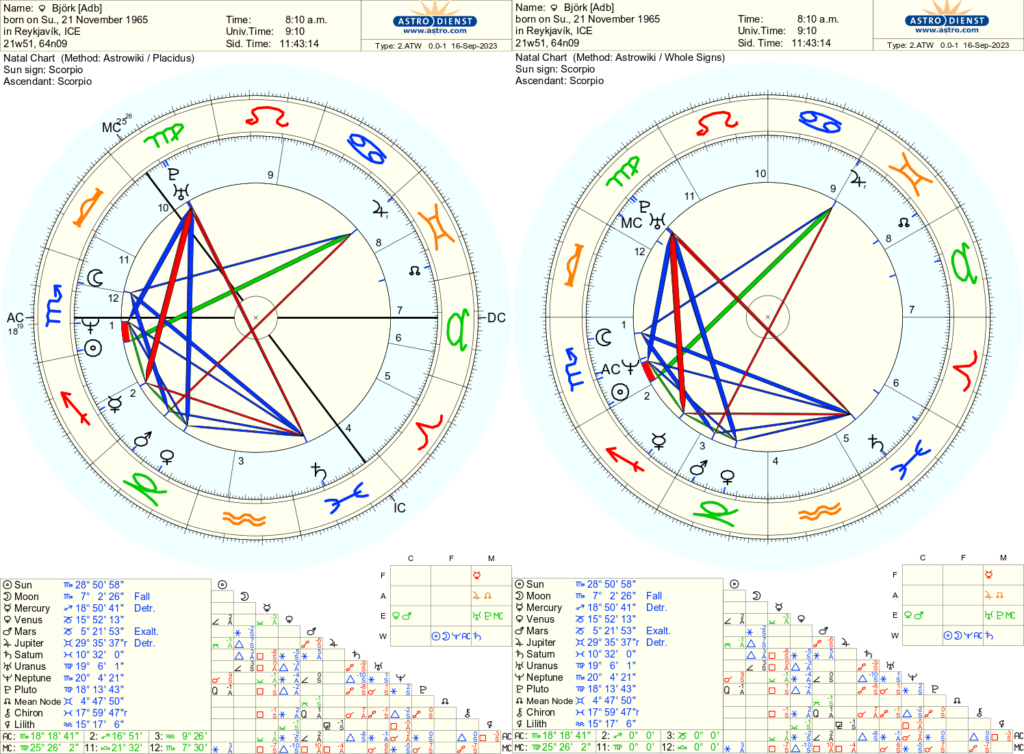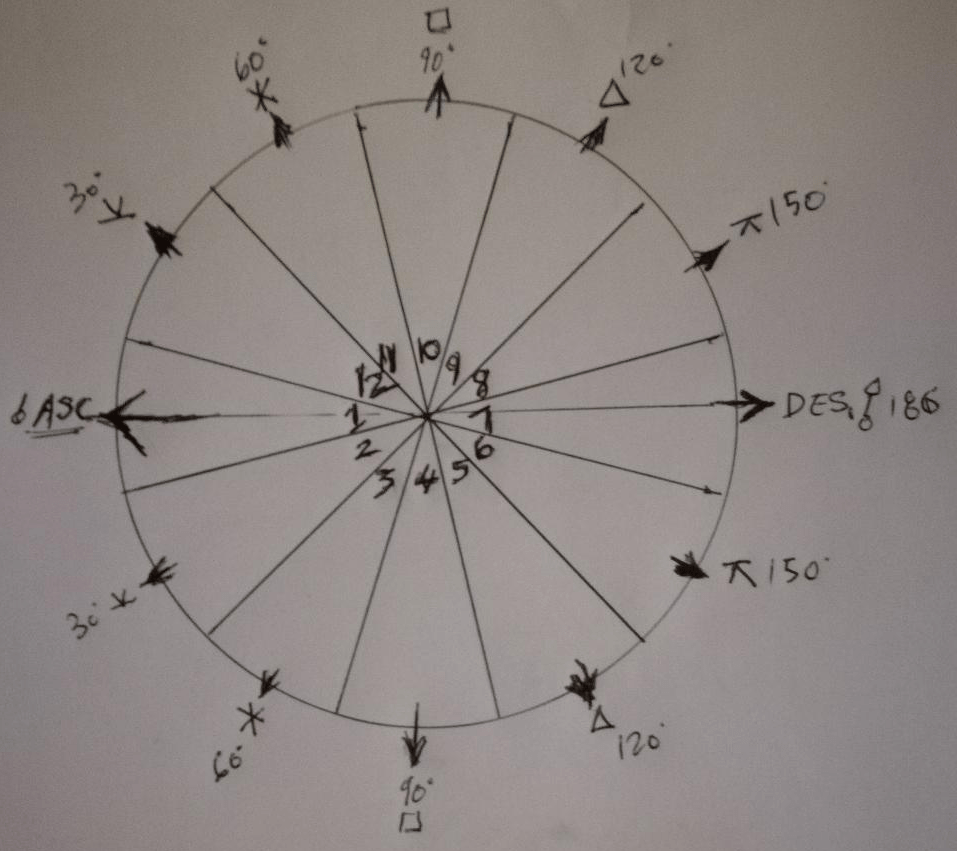The Bhava Chalit House System
What are the houses of an astrological birth-chart?
In very simple terms, the houses of the horoscope divide the space around the earth into twelve slices, so to speak, each of which represent certain specific areas of life, such as education, creativity, marriage, travel, etc.. The houses also notably represent specific relationships or people in our lives; for example, the 3rd House is associated with siblings, the 4th House parents (some say mother, others father, and yet others may consider it variable depending on the gender of the native), the 5th House is the children, the 7th House is the spouse, and so on. The ascendant or eastern horizon is the starting or anchoring point of this set of zones. This much is generally accepted and agreed upon by all astrologers.
Great, so what’s the problem?
Although the houses of the horoscope play a vital role in chart interpretation, there is considerable variance of opinion regarding how these zones are to be measured or determined, and this has become a matter of some controversy and debate. The “modern astrology” that took shape in the 20th century generally presented the Placidus method of house division as the gold standard, and this tends to be the default setting of practically all Western astrological software.
The Placidus house system is known as a “quadrant house system”. Quadrant house systems consider the degree of the ascendant to mark the beginning of the 1st House and the Midheaven is believed to determine the beginning of the 10th House. The various different quadrant house systems use different astronomical criteria for defining how each resulting quadrant will be divided into three distinct houses. Without getting bogged down in all the technicalities, one consequence of this approach is that the houses more often than not end up containing very different proportions of the ecliptic, which is divided into twelve zodiacal signs. At extreme northern and southern latitudes this unequal distribution of the zodiac signs in the houses results in some houses being very small and others very large.
This does not happen when using either the Equal House or Whole Sign methods of house division, which do not take the Midheaven as the cusp of the 10th House. In practice, these differences between the various methods of house division can result in planets occupying different houses, depending on the method used. Sometimes these differences can result in a dramatic divergence of the narratives produced in chart interpretation. The likelihood of radically different results becomes greater when the chart is cast for extreme northern or southern latitudes.
This is obviously a problem. Astrologers are not all reading from the same script when it comes to houses. Even when they agree on what the houses represent and the principles that should be employed to interpret the houses, they are not all using the same criteria for determining exactly where these houses are located. The question is, which method (or perhaps methods) are correct and produce the most accurate outcomes? The jury is out, and they’re apparently nowhere near arriving at a consensus.
The so called Equal House method is quite simple: each house spans precisely 30 degrees of the ecliptic, starting at the degree of the ascendant. If the ascendant is located at 20 degrees Gemini, the 1st House starts at 20 degrees Gemini and ends at 20 degrees Cancer, and 20 degrees Cancer would mark the beginning of the 2nd House which would end at 20 degrees Leo, and so on. This method has been fairly widely used in modern Western astrology, but is far less popular than the Placidus method.
The complexity of this battle of the house systems has been exacerbated in recent decades by the growing popularity in the West of the so-called Whole Sign method of house division. This has come about as a result of the revival of interest in the more ancient and traditional methods of astrology pioneered by Robert Hand and others through Project Hindsight in the 1990’s. Like the Equal House method each house spans 30 degrees of the ecliptic circle, but as the name suggests, it’s based on the sign that is rising, rather than the degree. So, if any part of the sign Taurus is rising (or on the ascendant), the whole of the sign Taurus is the 1st House. The whole of Gemini would then constitute the 2nd House, and so on.
On the face of it one might get the impression that the quadrant house systems, of which the Placidus method is the most well known, are more advanced and sophisticated, since they typically consider more complex astronomical factors. This may in fact be one reason why many people assume the quadrant house systems would inevitably be more accurate. That is not, however, a safe assumption; increased complexity does not necessarily result in enhanced efficacy, and there are some situations where quadrant houses present some perplexing questions.
Take for example the Placidus chart of the famous Icelandic musician Bjork. Her 12th House cusp is located at 7 degrees tropical Scorpio and her ascendant at 18 degrees Scorpio, so her 12th House contains literally slightly less than 11 degrees of the ecliptic (which will also be the case for her 6th House). Compare this to the chart of Greta Garbo, born in Stockholm, Sweden, whose 12th House is comparatively enormous, spanning slightly more than 81 degrees! Her 12th House is almost 8 times larger than that of Bjork.

One implication of this relates to life cycles as seen through transits. Are we really to believe that Greta would have the transiting moon, for example, spend nearly 8 times longer in her 12th and 6th Houses than Bjork? Can there really be such radical differences in the life cycle patterns of individuals? I can’t say for certain that it’s impossible, but it seems improbable.
One apparent benefit of the Equal House and Whole Sign methods of house division is that they obviate this perplexing question.
But there’s another issue I want to raise which relates to the symbolism of the houses. The eastern horizon or ascendant, which marks the beginning of the 1st House, is related to the idea of birth and beginnings generally. Planets are “born” and come into view in the east, but ironically as they do so they immediately enter the 12th House, which is associated with obscurity and that which is hidden.
Technically, according to most house systems (and certainly all quadrant house systems) a planet even just a degree or two above the ascendant is located in the 12th House, and as such it’s energy will inevitably be interpreted as limited, obscured and “imprisoned” in some way. Yet, even so, some astrologers will simultaneously say that such a planet just a few degrees above the eastern horizon is conjunct the ascendant, and this factor would yield an interpretation almost indistinguishable from that planet being located in the 1st House.
If we accept that this is a little confusing and awkward, that a planet that has just made a glorious debut in the east is somehow “hidden” by being in the 12th House, the Whole Sign house system often resolves this, because a planet may in many instances be in the 1st House despite having recently risen above the eastern horizon. In other words, the ascending degree is no longer a hard border, so to speak, between the 12th and 1st Houses, allowing the entire area around the ascending degree to represent the potent emergent attributes of the 1st House. Using the Whole Sign house system often results in planets that would otherwise have been considered relatively weak being seen as powerful 1st House influences.
See the Bjork’s chart below. The Placidus chart on the left places the Moon as technically in the 11th House but so close to the cusp of the 12th House that many Western astrologers would take it as a 12th House Moon. The Moon would definitely be in the 12th House using the Equal House system (which would place the 12th House cusp at 18 Libra); but in the Whole Sign chart on the right the Moon ends up in the 1st House, which is often an indication of fame and popularity.

As an aside, I recall that in one of Alan Leo’s textbooks, I think it was in How to Judge a Nativity, there’s a section on “the rising planet”, which, notably, was not being presented as quite the same thing as a planet in the 1st House, but rather any planet near the ascendant. The implication was that such planets are particularly powerful and important, and the author noted that a planet could be considered as “rising” when up to 15 degrees above the ascendant.
Well, when we speak of a rising planet being prominent (which is for all practical purposes treating it as a 1st House planet), and that it could be considered rising when up to 15 degrees above the ascendant, how do we reconcile this with the fact that this 15 degrees above the ascendant is on average a full half of the 12th House’s territory? How do you get a planet to be prominent and powerful, and weak and obscure at the same time? I think this curious feature of Alan Leo’s textbook, if nothing else, confirms that we are indeed confronted with a conundrum in the way quadrant houses define the beginning point of the 1st House.
Enter the Bhava Chalit house system of Jyotish
Jyotish typically employs the Whole Sign house system as the default setting in chart calculation, but many also consider what is generally known as the Bhava Chalit method of house division as an alternative. Some Vedic astrologers will use it consistently with every chart, usually alongside the Whole Sign method, or it may be consulted to get a to get a second opinion on house placement if there is ambiguity for any reason; such as when the ascendant is very close to the cusp of two signs, which can result in two completely different set of house placements if you’re using Whole Sign houses.
Just as the Whole Sign house system is not exclusive to Jyotish and is now widely used in the West, so too I believe there is nothing especially “Vedic” about the Bhava Chalit house system, and I don’t see any reason why it shouldn’t be considered as a viable option by Western astrologers.

The Bhava Chalit method takes the ascending degree as the middle and not the beginning point of the 1st House. So, for example, if the Ascending degree is 18 degrees Scorpio, the 1st House will span from 3 degrees Scorpio to 3 degrees Sagittarius. 18 degrees Sagittarius will likewise be the middle of the 2nd House which will span from 3 degrees Sagittarius to 3 degrees Capricorn.
So, the house cusps of the Western Equal House system (which are, importantly, all places from which a planet would form an exact 30 degree multiple aspect to the ascendant) are here the middle instead of the beginning of the respective houses. With the Bhava Chalit method a planet will indeed remain in the 1st House up to 15 degrees above the ascendant, and so Alan Leo either knew about it and was trying to find a way to incorporate it into his textbook without being explicit about the nature of the problem and the source of its solution, or this is the answer he was looking for to the dilemma he was tacitly acknowledging and trying to address in his “rising planet” principle.
Interestingly, proponents of the Bhava Chalit method call the middle of the house the “cusp” even though it is not the beginning of the house. This middle-of-the-house cusp is also described as the “most effective point” of the house, implying it is the heart and most potent zone of the house, where a planet’s influence might have the greatest influence on the house, and vice versa. This would in itself be quite a novel, and potential useful idea to most Western astrologers.
I recall that Robert Hand wrote somewhere about the fact that technically the cusp is not necessarily the beginning point of a house, even if that is how the term “cusp” is colloquially used. Rather, it something like the focal and most vital zone within a house.
The fact that the “cusps” of the Bhava Chalit chart, like the cusps of the Equal House chart, happen to be the place from which aspects are formed to the ascendant suggests that these house systems are essentially simply aspects to the ascendant. This is arguably also true of the Whole Sign house system; we could view the houses in that system as sign based (rather than degree based) aspects to the ascendant. There’s a place where the difference between signs, houses and aspects gets rather hazy. They’re often quite interchangeable and seem to be variants of the same core ideas.
This seems to be the major difference between quadrant house systems and those that do not use the midheaven to define the location of the 10th House. That latter are essentially aspects to the eastern horizon, whereas the quadrant house systems incorporate various degrees of astronomical complexity into their equations, which may or may not yield a superior product, but it is ultimately doing something very different to the house systems that are simpler and more symmetrical in relation to the zodiac.
It is a rather curious fact that even though many leading astrologers in the West swear by Placidus or other quadrant house systems, a great many prominent authorities, including in particular such towering figures as Robert Hand, consider the seemingly simplistic Whole Sign method to be at least as effective, if not superior to other house systems. I seem to recall that Rob Hand said in an interview (paraphrasing here) that his belief in the value of the Whole Sign house system was based, quite simply, on outcomes. When there was a difference between the outcomes of more regular house systems, like Placidus, and the Whole Sign method, it tended to be the Whole Sign method that produced the more convincing answer.
In this spirit of open minded inquiry and empirical observation, I hope you will reflect on the logic and also test for yourself the utility of the Bhava Chalit method of house division. There may or may not be a single completely and utterly superior house system. Perhaps more than one approach should be employed simultaneously, for all I know? Whatever the case may be, the Bhava Chalit house system seems to provide solutions to some of the problems and ambiguities in several other approaches and it seems to be based on simple yet sound astrological logic.